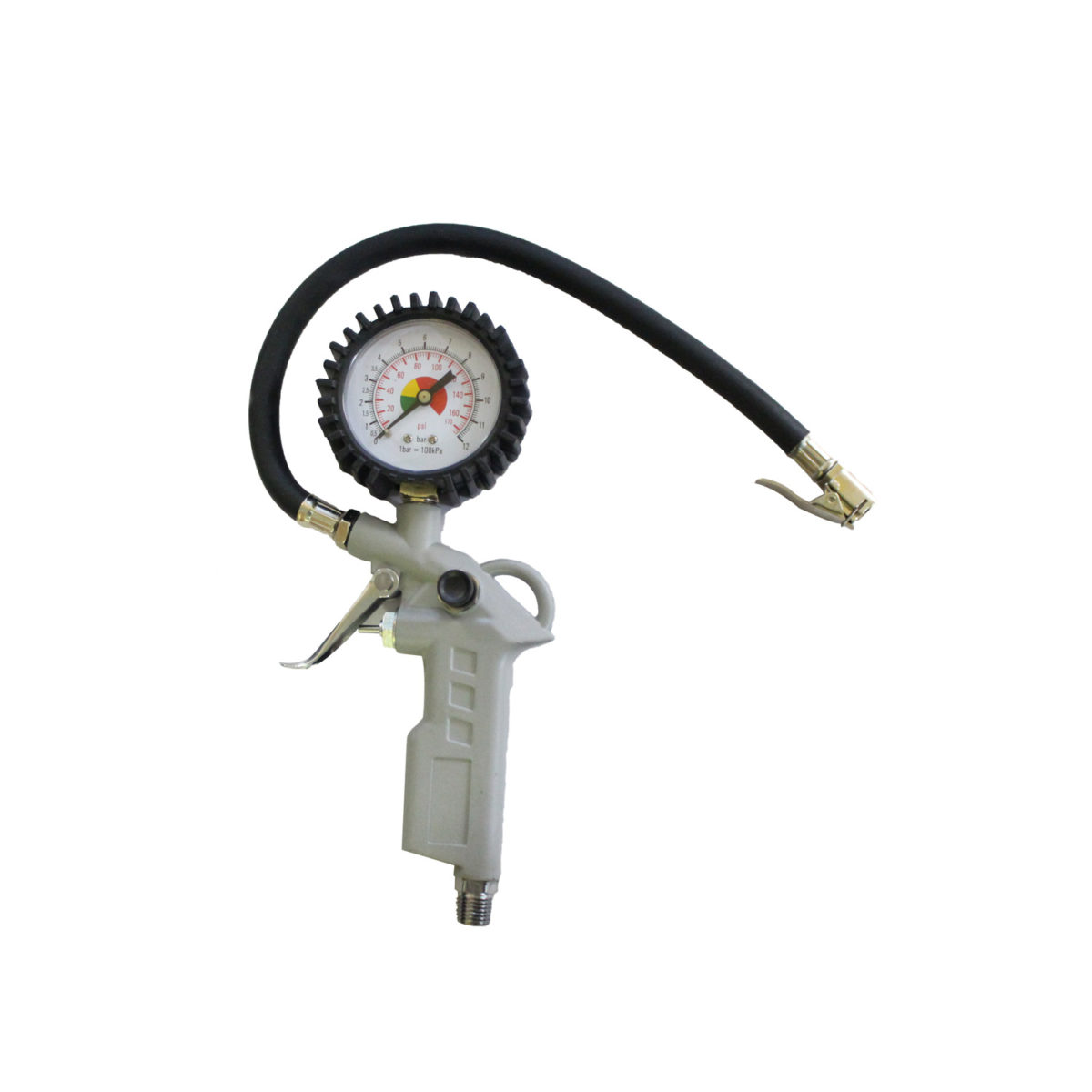Driving can be luxurious if an individual manages to take proper care of their vehicle. Therefore, maintaining its parts and ensuring adequate control over it is extremely important. Tyres are identified as one of the essential features in a car that is often overlooked. However, it is vital to know the usage and importance of a tyre pressure gauge for checking tyre pressure. Underinflated tyres can lead to accidents, reduce steering control, and complete tyre failure. Therefore, to ensure that your tyres have the proper pressure, go through the article and understand the concept and usage of a tyre pressure gauge.
What is a tyre pressure gauge?
Before learning the usage, let us know the meaning of a tyre pressure gauge. It is used to estimate the pressure of a vehicle’s tyres, such as a car or a motorbike. Using a gauge offers accurate and reliable readings about the tyre pressure in both digital and standard formats.
Simply estimating the tyre pressure using your eyes is not ideal and might lead to misleading outcomes. The gauge uses the measurement of pounds per square inch (PSI) to record and interpret the tyre pressure. It provides a unit measurement that allows drivers to comprehend the inflation of the tyres.
There are several benefits of having a well-inflated tyre in your car. If the tyre is under or overinflated, it can cause serious issues such as tyre failure or losing control. A tyre pressure gauge helps you to combat potential problems by ensuring that the tyres have the correct pressure in a quick and hassle-free way.
Steps for using tyre pressure gauge
Step 1: Cool your tyres
You need to cool your tyres before checking their pressure for better results. Vehicle manufacturers recommend PSI based on cool tyres. Therefore, you can check the tyre pressure in the morning or after parking your car for three hours or more.
Step 2: Check the recommended PSI by the manufacturer
The driver or owner of the car offers a manual that guides the right PSI for your front and rear tyres in their cool position. Check the pressure unit for each tyre and make a note of it. Avoid confusion and ensure that it matches the current tyre pressure.
Step 3: Locate the tyre valve and press the gauge
The tyre valve is a small black tube with a threaded cap. It is an inch long and can be found inside a tyre’s rubber wheel. You need to locate the valve, remove the cap, and fit the tyre pressure gauge over its top. Take care of the removed cap since it is tiny and relatively easy to lose.
Step 3: Use the gauge
Once you locate the valve, you need to use the pressure gauge and press it down onto the top of the valve. Every valve consists of a spring-loaded core that seals itself automatically using air pressure. The gauge opens the valve to the air pressure inside the tyre and acts as the seal while measuring the PSI rating.
Step 4: Check the reading
It is vital to ensure that no air is escaping; hence, you need to hold the tyre pressure gauge firmly. The gauge might make a hissing sound to indicate air escape, so you need to adjust the angle to stop the sound. To check the reading, you need to comprehend your gauge. For manual pen gauges, read the slide ruler. Read the dial for dial pressure gauges and the digital screen for digital pressure gauges. The display will indicate the current pressure of the tyre in PSI.
Step 5:Fill tyres to the recommended PSI
After reading the pressure measurement, note it down, so you don’t forget it. If the pressure is too high, you must hold the tyre pressure gauge against the valve and drain some air. The tyre will make a hissing sound to ensure that air is escaping. During this, keep checking the pressure and stop once the desired PSI is attained to prevent excess air escape.
Don’t get worked up if the tyre pressure is extremely low instead of high. Instead, connect an air compressor to the tyre valve and inflate it. After inflating the tyre, use the gauge to check the PSI and ensure that the tyre has the correct level of pressure that matches the manufacturer’s recommendations.
Since you know how to drain air from overinflated tyres, it is alright if the air compressor overfills them. So let some air out and enjoy smooth driving.
Step 6: Perform monthly pressure checks
Check the tyre pressure every month and make it a ritual. It will ensure that the tyres never go below the recommended PSI. In fact, you should check it before going on a major event or journey.
Conclusion
Checking your tyre pressure is extremely important regularly. Accuracy is another vital factor in ensuring that your tyres are in good condition. Choose the right gauge to ensure that the readings are accurate. You need to know the usage of a tyre pressure gauge to maintain your vehicle. By checking the tyre pressure, individuals can ensure that they are using all the tyres effectively and preventing premature wear and tear.



